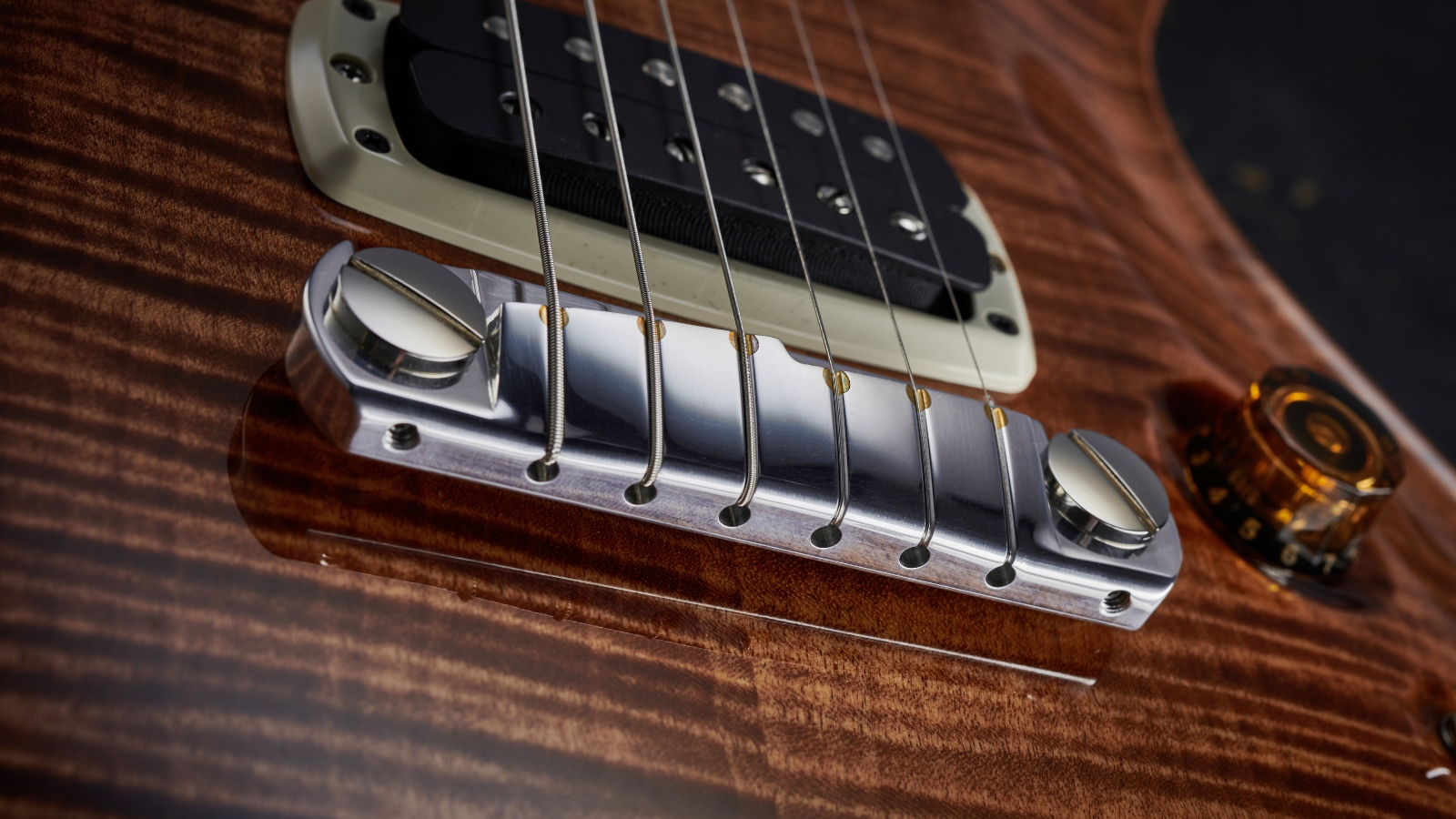
Understanding the components of your guitar is all part of learning the instrument and is just as important as chord shapes, scales, what pedals do, and the different types of amplifiers. Knowing the types of guitar bridges available to you will help inform your next purchase or upgrade, allowing you to select the bridge type that will best suit your playing style.
In this article we're going to take you through the majority of guitar bridges you'll come across in the wild west of guitars, from hardtails to roller bridges and everything in between. We'll show you the pros and cons of each so you can better understand what's best for your personal playing style. At the end of the article we've also highlighted some of our top picks for guitar bridges if you're looking to upgrade.
What is the bridge on a guitar?
A guitar bridge is what anchors your strings to the body of your guitar. Typically found on the lower half of the instrument, it guides the strings over your pickups or acoustic guitar soundhole, up across the neck, and towards the headstock. Whilst no guitar would be the same without its core parts, the bridge plays a decisive role in how your instrument plays.
Your guitar bridge is the key component in some crucial aspects of your guitar’s setup, with intonation adjustments and your action (in conjunction with your nut and truss rod) being determined from this point. It’s important to note the string spacing for your instrument is determined by that of your guitar bridge saddles, so if you are going to change your bridge, make sure you take that measurement into account.
Before we get into specific models, there are two main guitar bridge types you’ll need to know about, fixed bridges and tremolo bridges. Each has its own pros and cons, lending itself well to particular musical genres or playing styles. No bridge design is perfect either, so you’ll always be making a compromise somewhere depending on your choice.
Fixed bridges
A fixed bridge means that the bridge doesn’t move. It’s one of the most common types of bridge on Les Paul and Telecaster guitars, much loved for its sustain, excellent tuning stability, and easy modification.
Wraparound
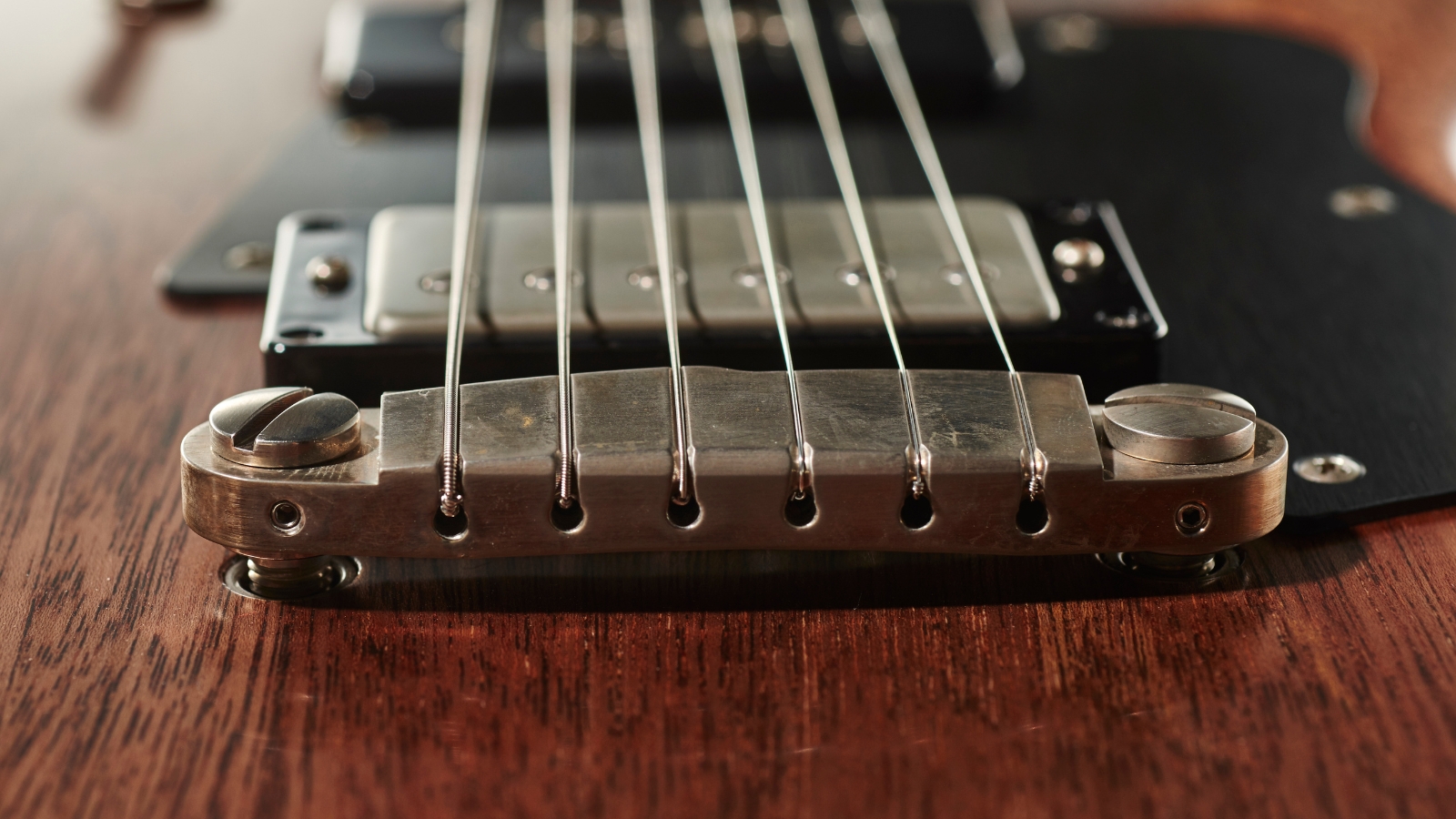
Pros
+ Easy to restring
+ Easy to replace
Cons
- No fine intonation adjustments
- Can’t be converted to a tremolo
The first modern guitar bridge to feature on electric guitars, the wraparound gets its name from the way you wrap the strings around the bridge. It’s a simple design that’s great for beginners, offering simple restringing and reliable performance. They’re also really easy to replace if you decide you want more mass or a different look.
However, it does suffer from a lack of flexibility when it comes to setup options, as you only get a small amount of play over your intonation adjustments, which are adjusted via two small screws on the bridge posts. You can only make broad adjustments to the action by raising or lowering the two bridge posts, unlike some other bridge designs. It also cannot be converted into a tremolo bridge without some serious modifications to your guitar.
Tune-o-Matic
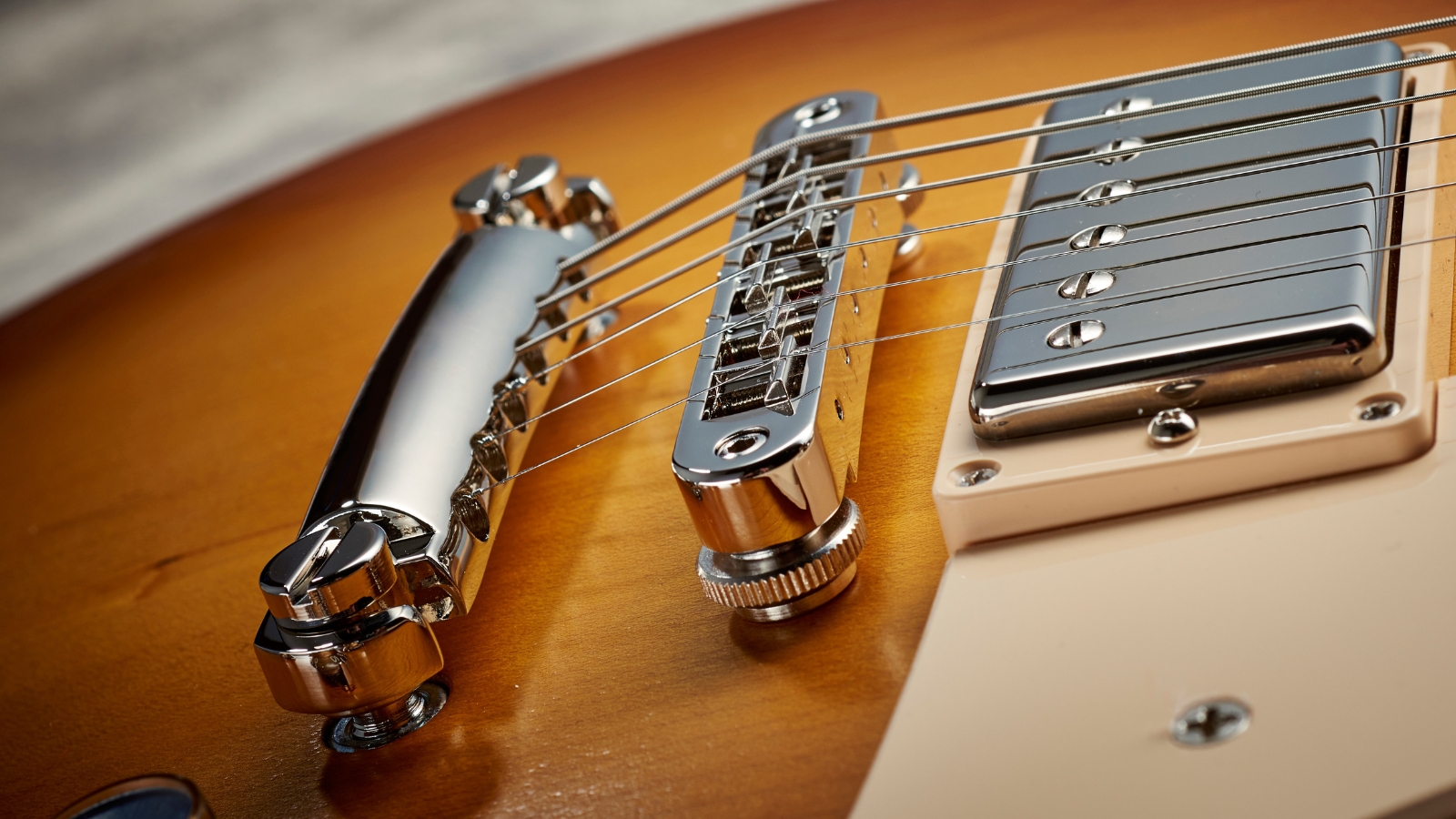
Pros
+ Excellent sustain
+ Easy intonation adjustment
+ Can be converted to roller tremolo
Cons
- Can’t be used with round-radius fretboards
- Only two points for action adjustment
First used on the 1952 Les Paul Custom, the tune-o-matic was the natural evolution of the wraparound, keeping the initial bridge design whilst adding a stop bar to increase the length of the string and add a break angle.
The break angle of the strings over the bridge, as they move toward the stop bar, allows for much-improved sustain over the wraparound. Due to this design, you also get more play in adjusting the intonation on the bridge saddles, particularly with the Nashville-style tune-o-matic bridges.
Whilst it’s a big improvement over the wraparound, there are still some similar limitations with this type of bridge. You can only adjust the action via the two bridge posts, which means you have to make sweeping changes rather than being able to individually adjust the height of each string. The design also means it can only be used with 12” or flatter radius fretboards, so it won’t work on 7.25” or 9.5” radius guitar necks.
Hardtail
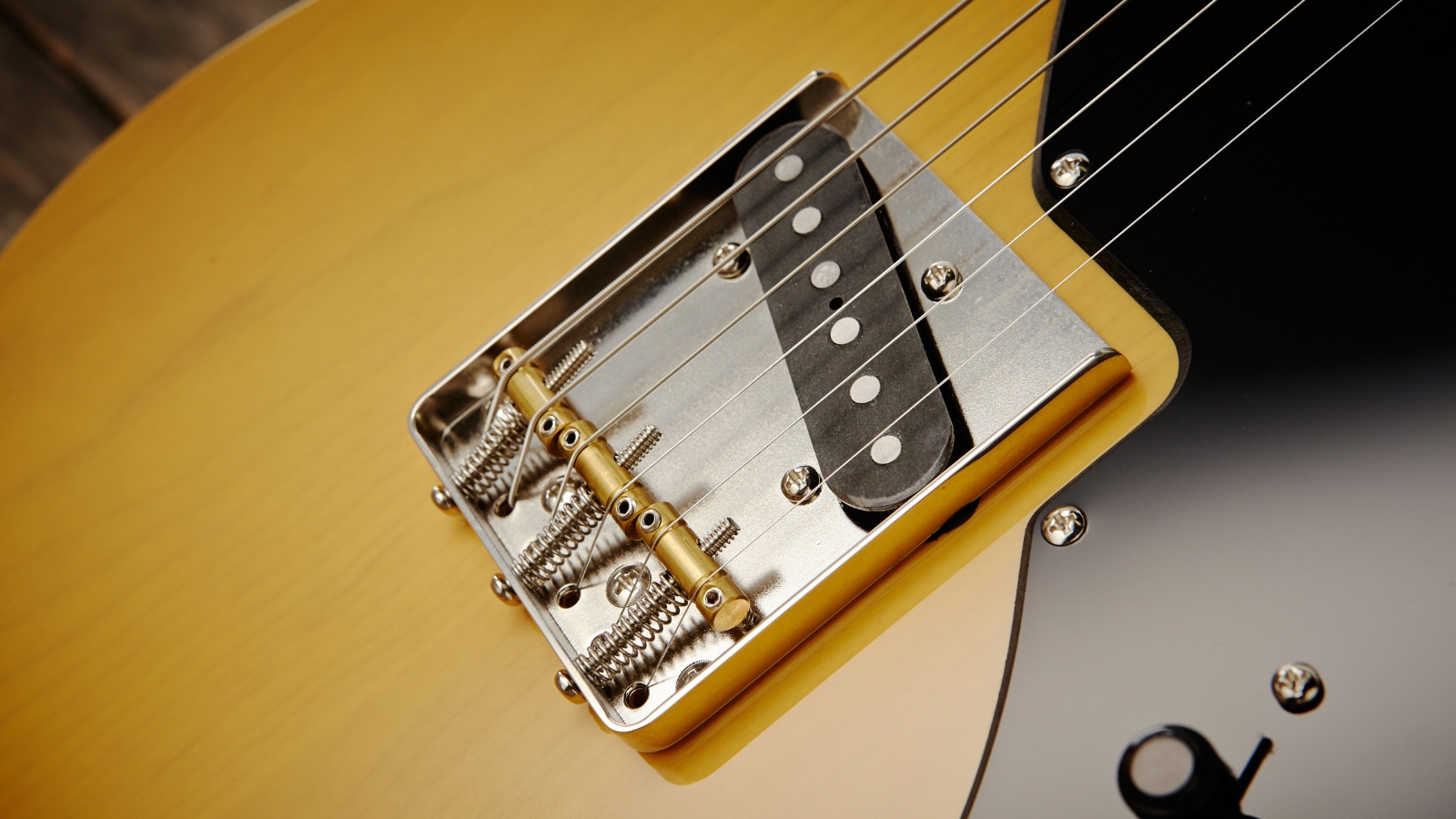
Pros
+ Excellent tuning stability
+ Easy replacement
+ Easy restringing
Cons
- Can't be fitted on an arch-top
- No easy tremolo modification
The last of the fixed bridges come in many forms, and you’ll often see them on Telecasters and T-type guitars, as well as some Stratocasters and other S-type derivatives. The hardtail bridge is bolted down to the body of the guitar, which means it has excellent tuning stability, and if you use one with a set of locking tuners you’ll seldom have to retune your instrument.
Typically coming with individual saddles for each string, or the three-saddle setup for classic Telecasters, they’re amongst the most versatile of bridges when it comes to setting up your instrument allowing you individually adjust each string's height and length for intonation.
The only real downsides of a hardtail bridge are that can’t be fitted on arch-top guitars like LPs. It's not necessarily easy, but you can convert a hardtail to a roller bridge-type tremolo, for example using a Bigsby and a converter kit like the Vibramate. There’s also the very interesting VegaTrem VT2 Teletrem that can convert your hardtail Tele to a tremolo-equipped guitar.
Tremolo bridges
A tremolo bridge ‘floats’ ever so slightly above the guitar body or in a cavity, allowing you to apply vibrato effects via the use of a tremolo arm or whammy bar. Guitarists love them for their expressivity and if you listen to players like Jeff Beck, Eddie Van Halen, Steve Vai, and Dimebag Darrell, you’ll hear some fantastic examples of how a tremolo can add another string to your guitar-playing bow.
Floating Tremolo
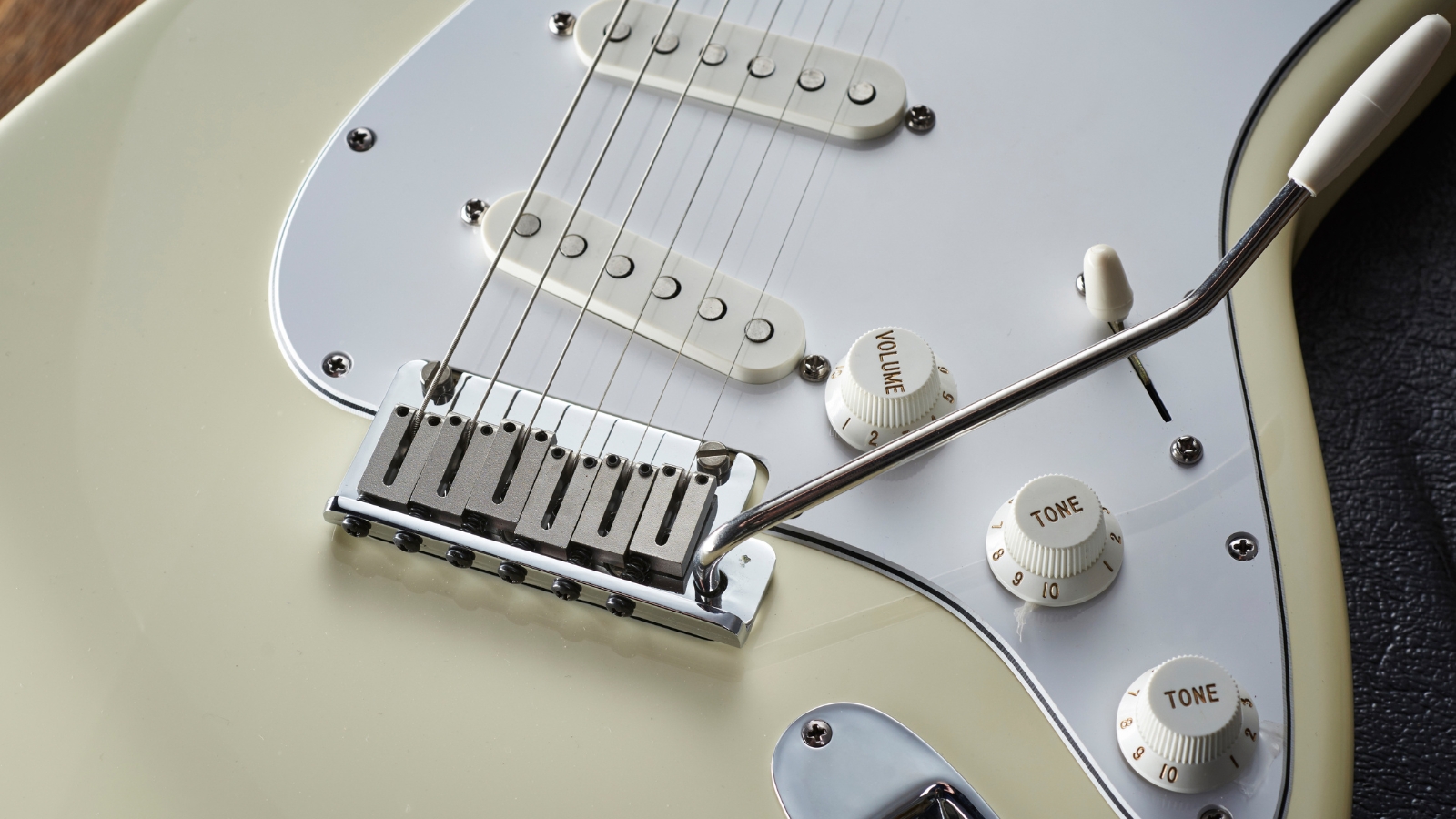
Pros
+ Easy intonation and action adjustment
+ Adds expression to your playing
Cons
- Can be a pain to set up
- Tuning stability isn’t the best
A floating tremolo, first called a ‘synchronized tremolo’ by Fender is a bridge that allows you to add some extra expression to your playing thanks to its floating design. The bridge itself is balanced on a two-point fulcrum with the strings going over the bridge saddles and into a tremolo block within the guitar body.
Springs are then attached to the tremolo block and the guitar body to hold the bridge in place, with varying spring amounts required depending on your string gauge and tuning. Featuring a saddle layout similar to some hardtail bridges, you get a lot of flexibility for intonation and action adjustments, making it one of the most popular bridges of all time.
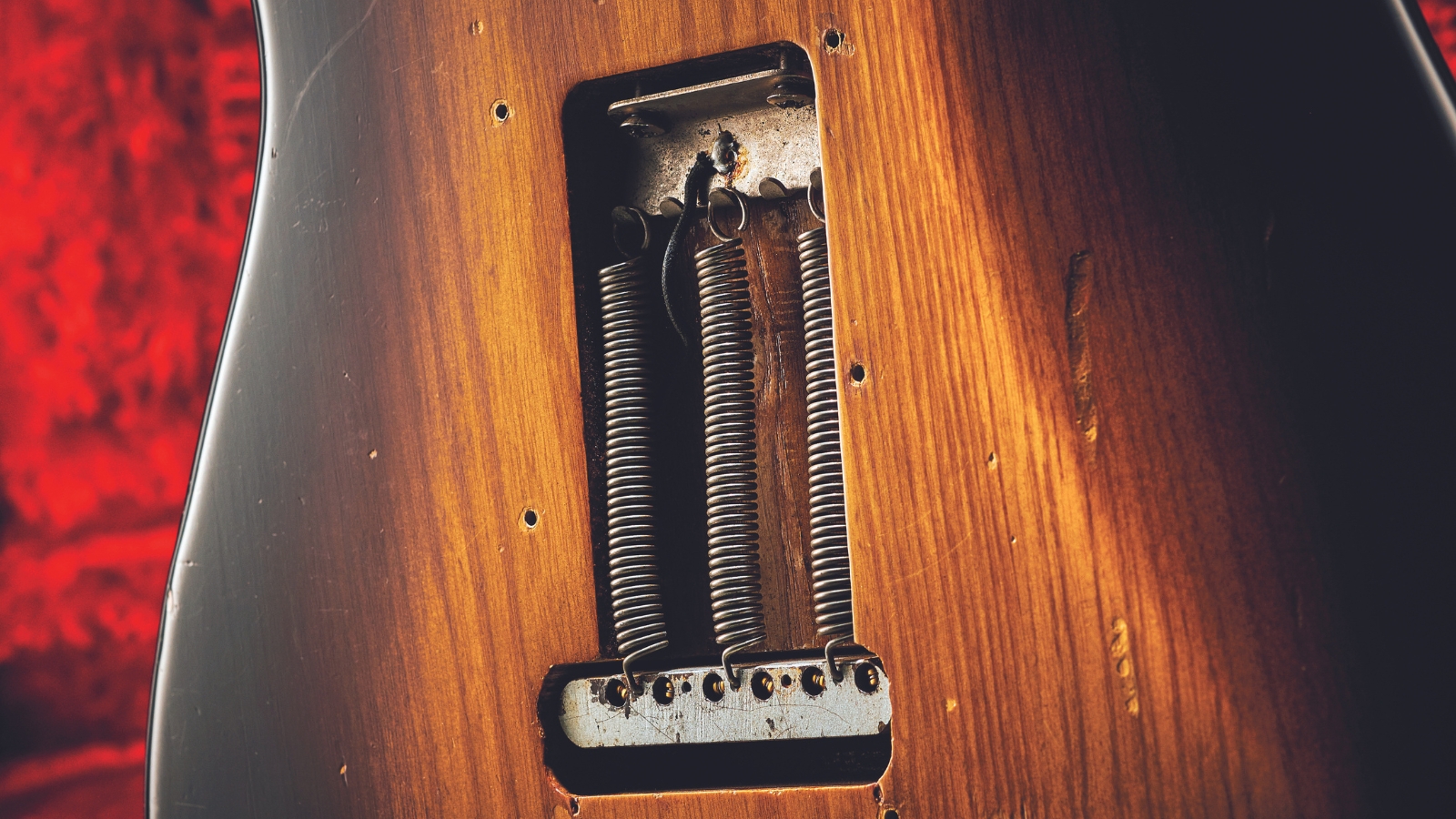
While the floating trem is amazing for adding extra sounds to your playing, it can be a real pain to set up at times, particularly when changing the string gauge. Setting up a floating tremolo is a balancing act between your string tension and the springs located at the rear of the guitar body. Thanks to this relationship, it also means that a floating trem is not as stable as a fixed bridge in terms of tuning, so unless you have locking tuners, expect to be re-tuning fairly often.
Locking Tremolo
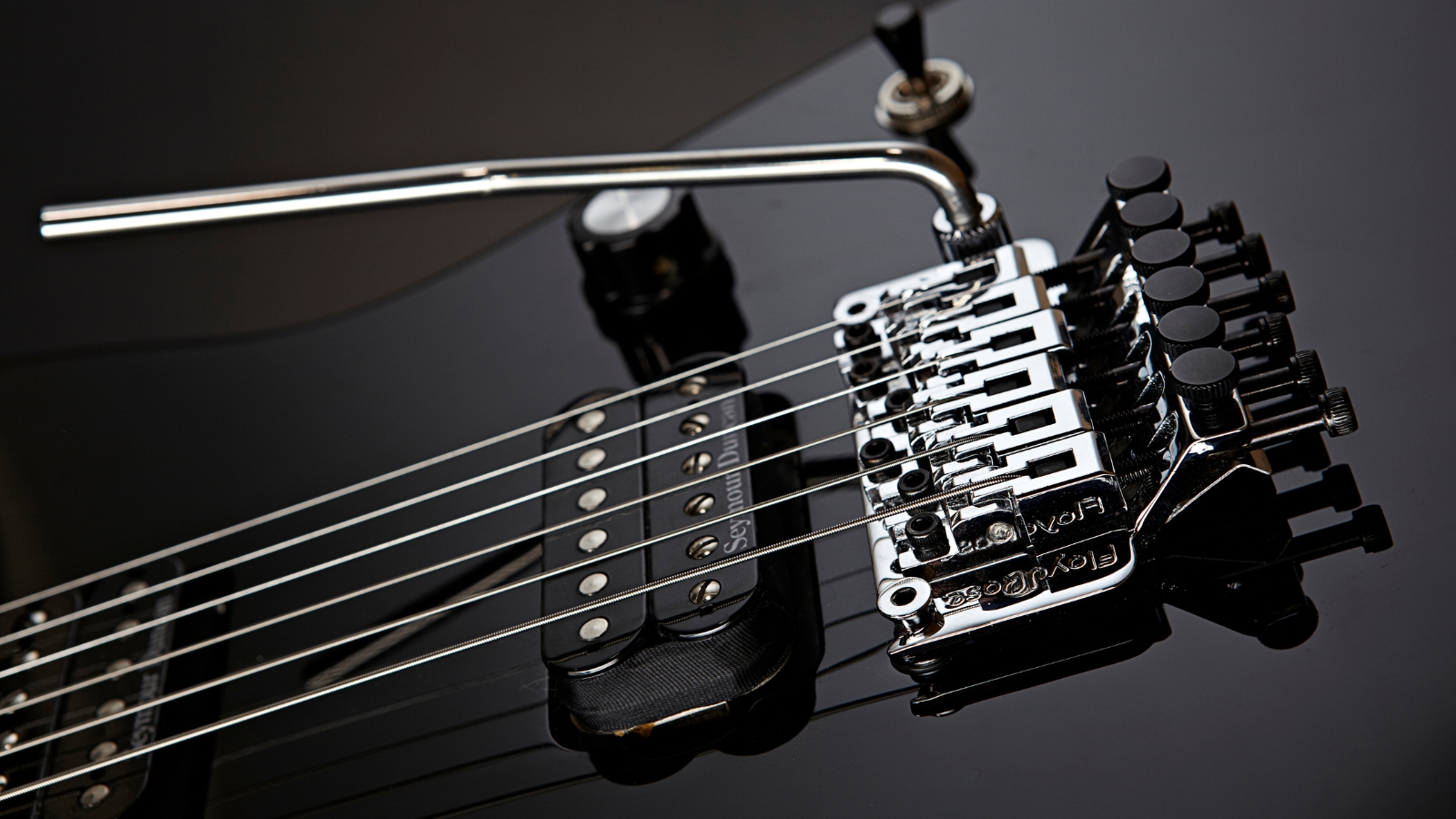
Pros
+ Divebombs!
+ Excellent tuning stability
+ Incredible range
Cons
- Difficult to set up
- String gauge changes are a nightmare
Like the floating tremolo, a locking tremolo relies on a balancing act between the string tension, bridge, and springs in the rear of the guitar body. It adds another element in the form of a locking nut, which means that you can loosen the strings dramatically and it will return straight to pitch when you let go.
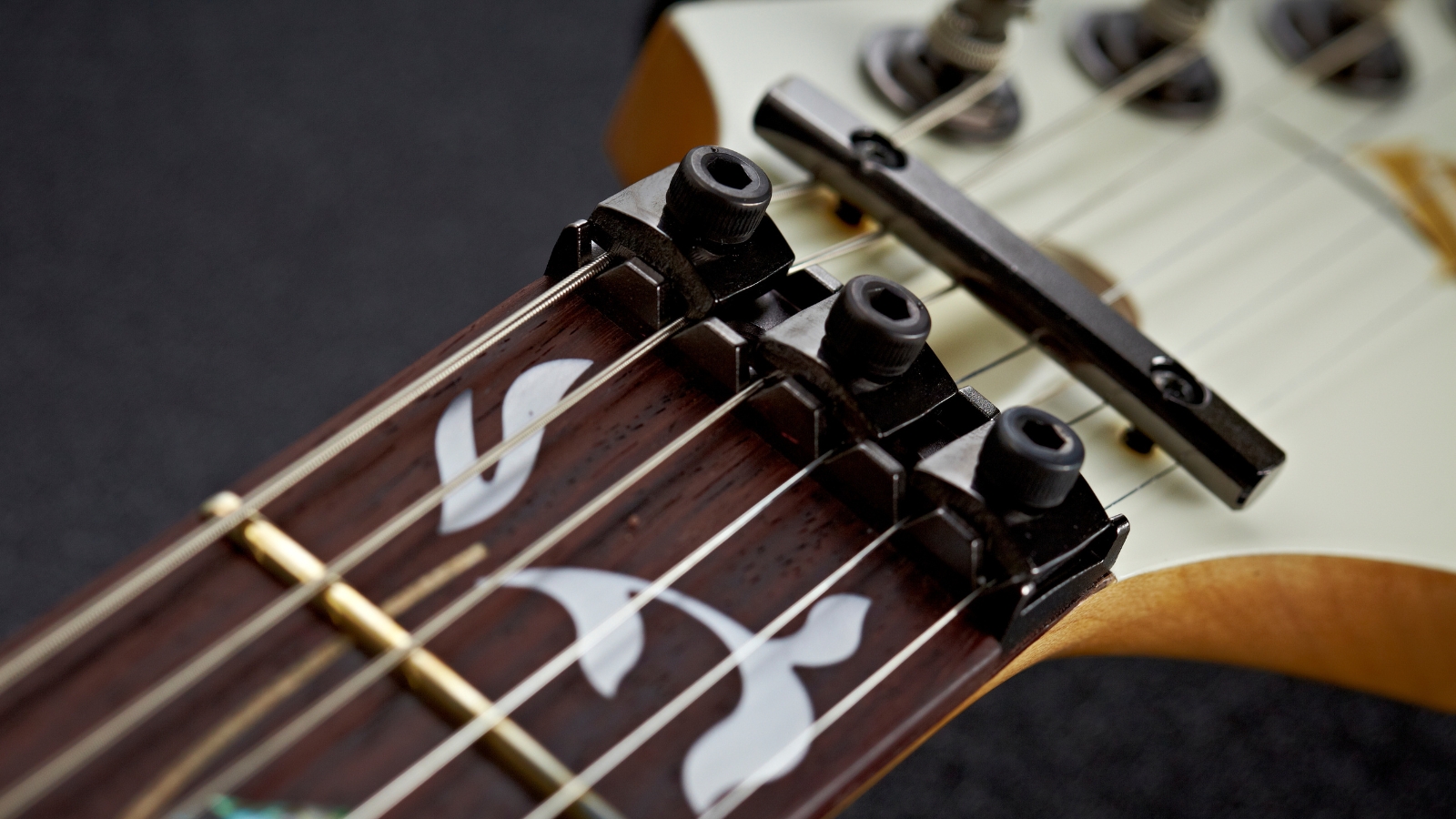
Most famously associated with the brand Floyd Rose, the locking trem has been utilized to great effect by many famous guitar players, giving you the ability to perform crazy divebombs, warbles, and even raise the pitch of the strings.
If you talk to any guitar player about a Floyd Rose or locking tremolo, you’ll inevitably discuss just how difficult they are to set up. It’s a complex system that requires a lot of balancing and if you’re foolhardy enough to try and change your string gauge or tuning, then expect to spend a lot of time stretching strings and retuning.
The other annoying thing about a Floyd Rose-type bridge is that when you break a string, it destroys the balance of the guitar so you can’t continue playing like you would with a fixed bridge or floating tremolo.
Roller Tremolo
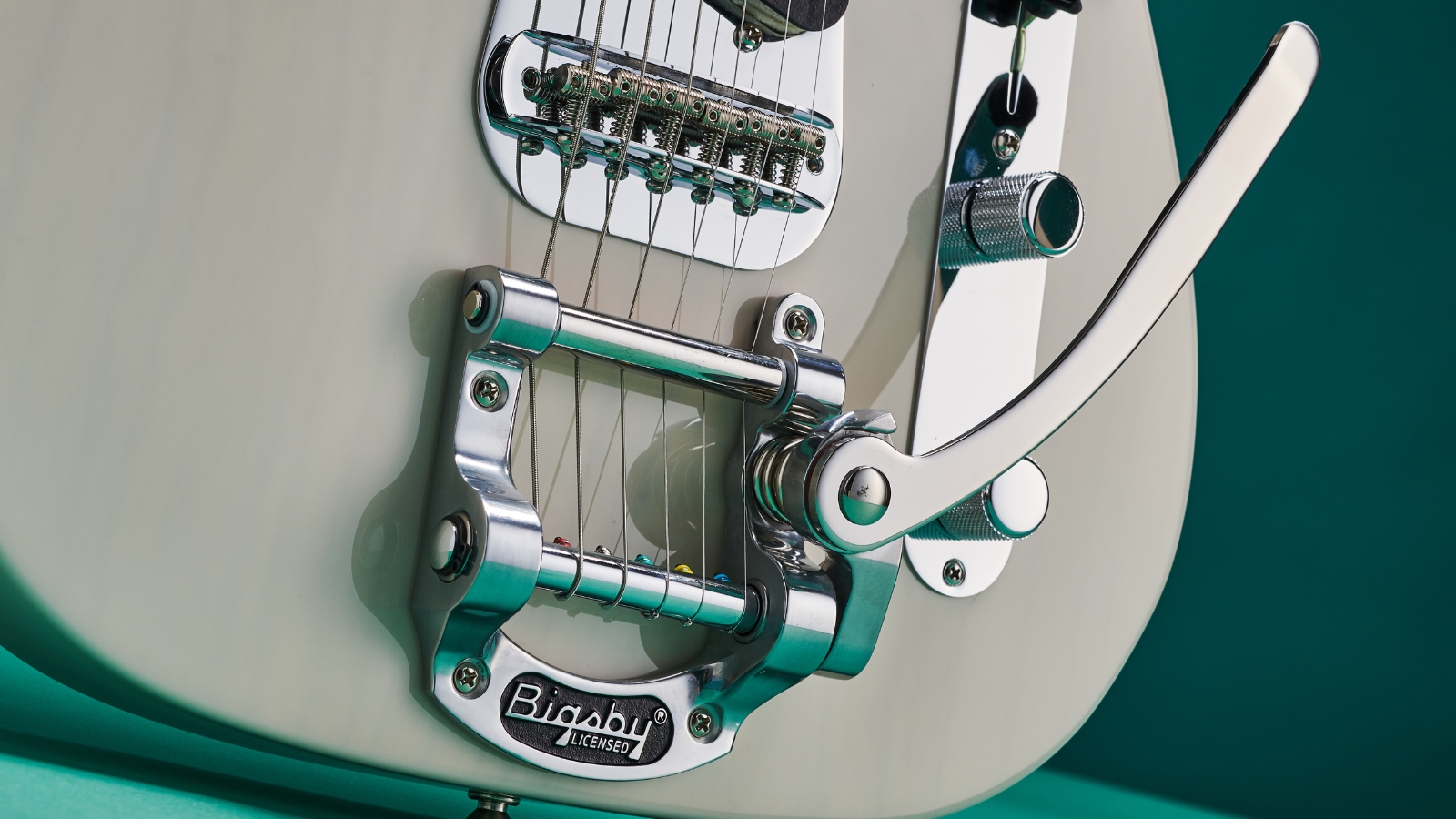
Pros
+ Can be fitted to archtops
+ Great for retro styles
Cons
- Tuning stability isn’t the best
- Can be tough to install
Finally, we come to the roller tremolo, most commonly known by the name of its biggest brand, the Bigsby. The heart of the Bigsby and other tremolos like the Duesenberg Les Trem and Stetsbar lies in the roller bridge function, whereby your strings are attached to a stop bar that’s then moved by a spring-loaded tremolo arm back and forth over your bridge.
The arm moves the strings and resets them back to their original position, resulting in the vibrato effect. It’s a subtle sound, and its particular advantage is that it can be fitted to many arch-top, hollow body, and tune-o-matic-equipped guitars.
The tuning stability of roller tremolos can be questionable, and it’s quite a common complaint of Bigsby users. It’s recommended that guitarists who want to utilize this bridge type add locking tuners and a roller bridge to help the stability, which adds to the overall cost of making this modification.
The Bigsby in particular can require modification such as drilling screw holes, and for many players, the complex installation and the busy look of a roller tremolo can be off-putting.
Conclusion
So there you have it, a list of all the major bridge types for electric guitar. Whilst they all do roughly the same job, you can see there are many different ways to achieve that goal and each bridge comes with its own plusses and minuses.
Changing a bridge can be a complex task if you've never done it before, so we'd highly recommend checking out some YouTube videos or taking it to an established luthier if you're unsure. If you are looking to replace your guitar bridge, we've picked out some of our favorites from each bridge type below for you to take a look at.
Related buyer's guides
- Into modding? Check out the best electric guitar pickups
- Upgrade your sound with the best P-90 pickups
- Get fatter tone with the best humbucker pickups
- Improve your picking with the best acoustic guitar pickups
- Get heavy with the best pickups for metal







